This exercise looks challenging and is aimed to assist me in the employment of colour and mood translation in materials and yarn; re-invent and re-interpret an approach to building structures and research and keep technical notes on my processes.
I will be developing a series of yarn designs and simple textile constructions in response to my colour work in Exercise 3.2.
In Exercise 3.2 my chosen image for my yarn wrap was a painting by Nicolas Poussin. The painting depicts a mother and father and seven young children. I was attracted to the richness of the colours in the painting, particularly the beautiful blue and the dusty pinky colours.
First I looked in my thread box for inspiration.

I was mindful of the threads I had used in exercise 3.2 but thought I would experiment further with a thicker string thread and fine shiny threads (similar to some in exercise 3.2) for exercise 4.3.
So I looked at some of the colours in my exercise 3.2 and decided to plait using fine shiny threads. It is difficult to capture the work because it is fine I have used in the second photo a macro lens but this somehow distorted the colours!
The second piece I decided to go big and used a piece of large cotton string and covered it with embroidery thread in a organic way and then loosely plaited the three yarns. It is not even but paint on a surface is not always even distressed or weathered textiles is not always even I was looking for an interesting finish.

I was required as part of exercise 4.3 to research a means of working with yarns to create some simple textile or constructed forms. I decided to look at macrame/knotting. I researched some books on the subject (referenced below. I was interested in creating a constructed form that was interesting I did not want a ‘paint by numbers’ type approach. I was trying to see how this would fit into innovative textile work in the future.
I started off using a fine width string and got hopelessly caught up in the knots! I decided I had been too ambitious and so selected a much thicker piece of cotton string and took it more slowly whilst still trying to keep it interesting. I thought if I wanted a precise piece of work it was more to me like doing a one day workshop and making a macrame pot hanging so I tried to be less precise. This is my first piece. It is based on an overhand knot and the shade is like that is my old Master’s painting.
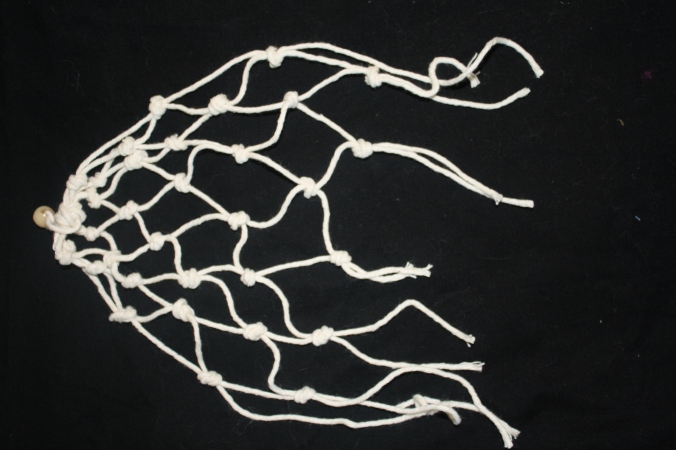
My second piece is based on a flat knot using the shade of yellow in my Old Master’s image. I could see this being used in textile pieces to add a three dimensional effect even like the suggestion of an insect. I used bamboo twine for this piece.

I have compiled the beginnings of a research file on knotting/macrame and will add articles that interest me. I have found a fabulous online shop which happens to be in Queensland but has great Australian, UK and Japanese strings and threads.
I have also located a new magazine which is produced in Singapore which has all sorts of macrame and weaving type work.

From this exercise I tried to build on my experimental threads in Exercise 4.1 and 4.2 and to think of the yarns in some ways as texture and paint colour. I think that I am developing. In that I am attempting to unfold, grow the potential of yarns, to change the form or expression of the yarn to unveil future treatments. I could spend enormous amounts of time working on just Part 4 of the Course. I could really try to stretch it further but time is not on my side right now. I think keeping the Research File has potential for me to dip back into this area to bring out further my ideas.
If I did Exercise 3.2 again I would try to find an Old Masters painting with less array of colours so I could focus more on just a few colours in my interpretations. I would also plan in advance and dye some of my string to give me more options for knotting work. I did not realise when I first read the Exercise 4.3 how many activities there were to be considered. I would like to explore some of the other ways of working with the yarns including braiding. I did not have a macrame board so found securing the top threads was difficult for the knotting/macrame work. I would also like to master the knotting and use more unusual yarns like wire, natural vines and incorporate other items like shells and seaglass. I have investigated getting a small drill to enable me to thread or put wire through shells and seaglass. I find these items on different beaches on the Queensland and New South Wales east coast.
References:
Rougerie C, “Amazing Macrame”, 2016, Search Press
Carey J, “200 Braids to twist, knot, loop, or weave”, 2007, Quartro Publishing



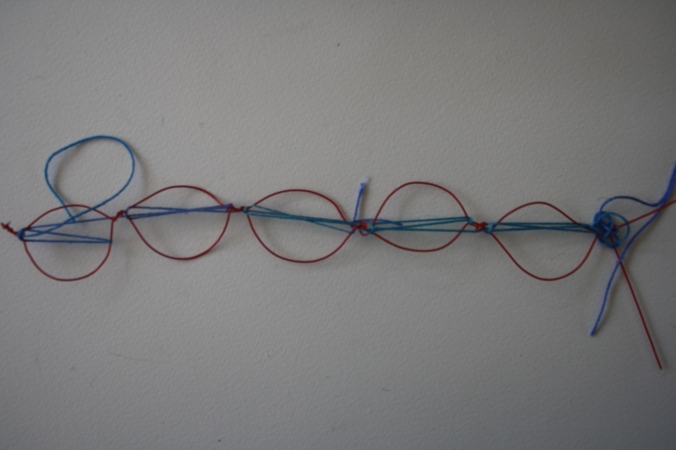
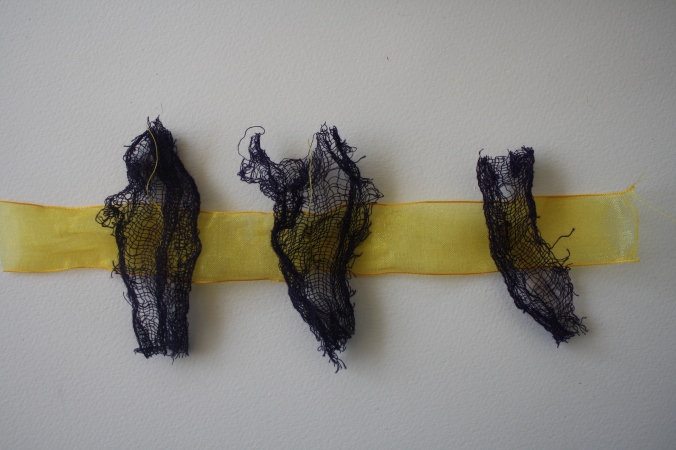 The third piece was made up of neutral colours layered influenced by my collage in the bottom right hand corner above. There is hessian as the base with hand dyed blackish cotton fabric layered and cream tape placed on top. Also secured by machine stitch.
The third piece was made up of neutral colours layered influenced by my collage in the bottom right hand corner above. There is hessian as the base with hand dyed blackish cotton fabric layered and cream tape placed on top. Also secured by machine stitch.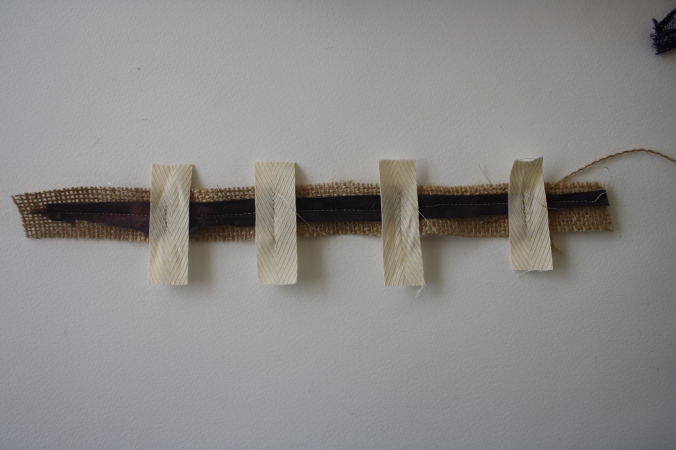 Fourth I took a piece of my hand dyed orange primatex cotton and a piece of wrapping cord I made with turquoise scrap fabric very narrow and zigzagged this to the orange cotton by machine. The orange and blue combination like my collage piece.
Fourth I took a piece of my hand dyed orange primatex cotton and a piece of wrapping cord I made with turquoise scrap fabric very narrow and zigzagged this to the orange cotton by machine. The orange and blue combination like my collage piece.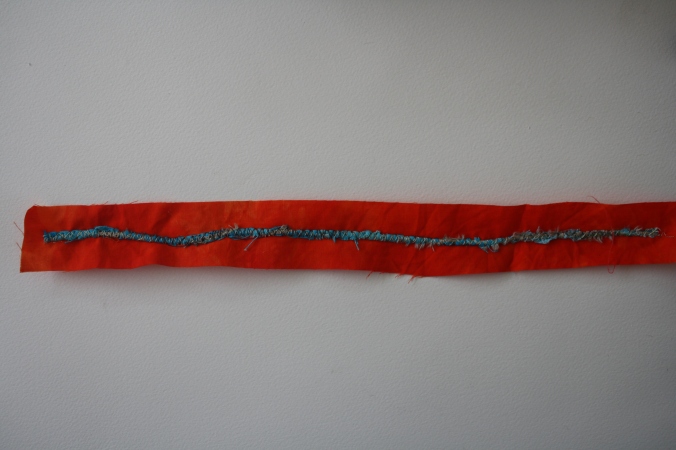 The final piece I made was inspired by my blue collage in the top righthand corner above. I layered blue hand dyed tape followed by some of my hand dyed cotton fabric and finally a shiny ribbon type thread which I attached by using a large running stitch.
The final piece I made was inspired by my blue collage in the top righthand corner above. I layered blue hand dyed tape followed by some of my hand dyed cotton fabric and finally a shiny ribbon type thread which I attached by using a large running stitch.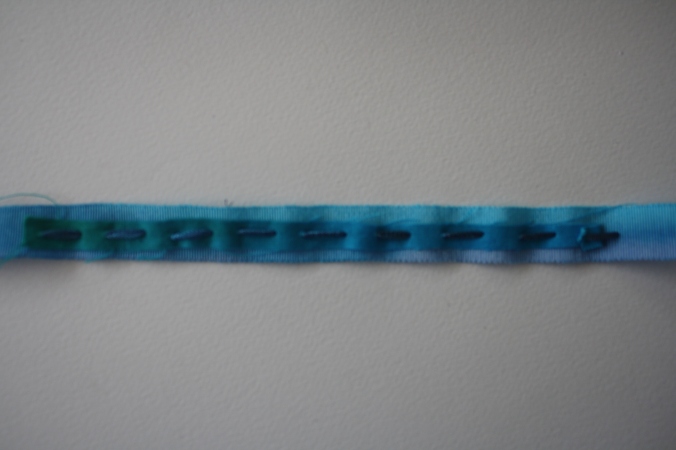


 I collected some materials from around the house that reflected both the colour palettes and the qualities in my watercolour strips. I found this fun.
I collected some materials from around the house that reflected both the colour palettes and the qualities in my watercolour strips. I found this fun.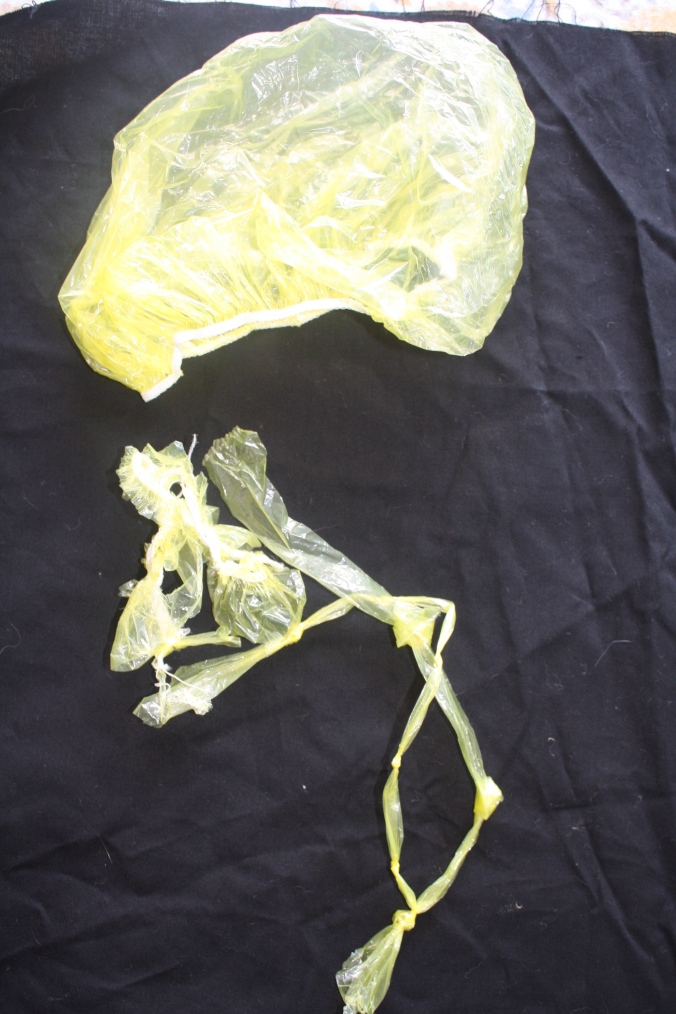
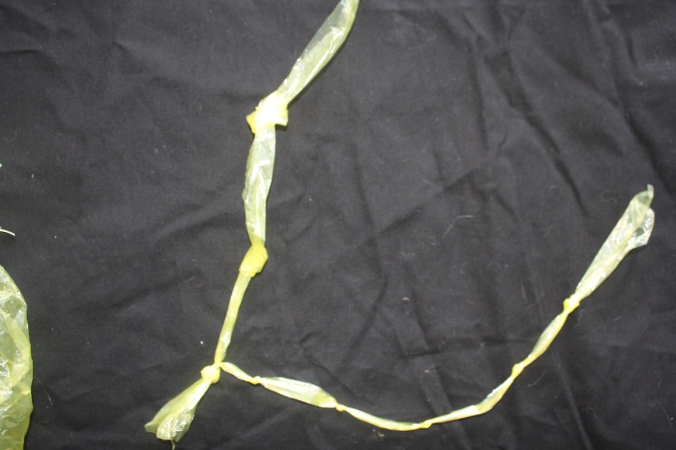
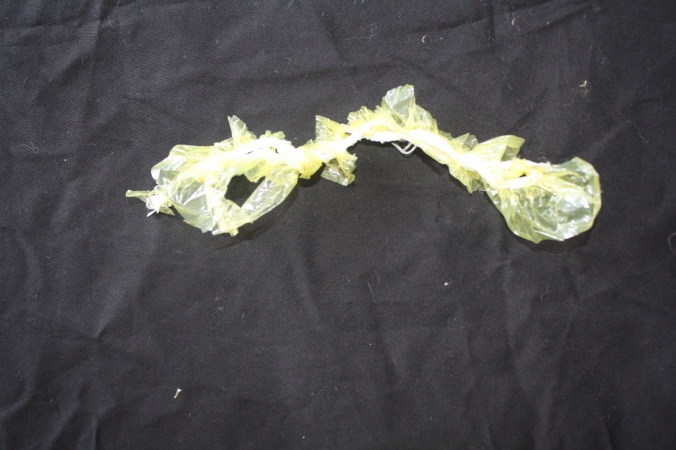 Next I was looking for an open transparent effect and wove some orange wire using a rough lock stitch I had seen in Jan Beaney and Jean Littlejohn’s book “A Tale of Two Stitches”.
Next I was looking for an open transparent effect and wove some orange wire using a rough lock stitch I had seen in Jan Beaney and Jean Littlejohn’s book “A Tale of Two Stitches”. This has potential use for weaving or thread darning in a macro sense.
This has potential use for weaving or thread darning in a macro sense.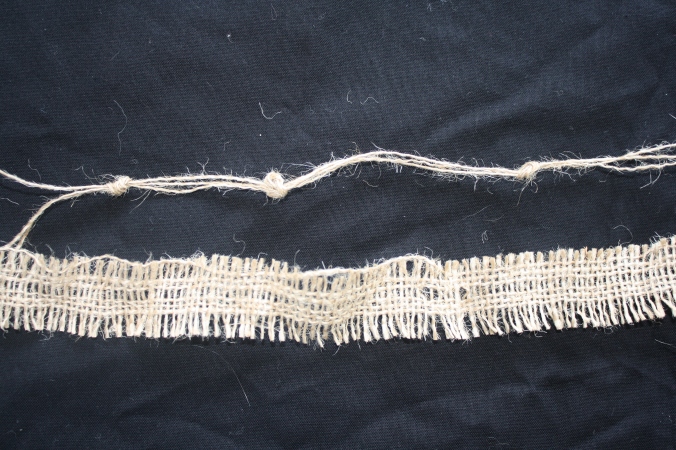
 Lastly I found some tape that had been wrapped around something that had come into our house it was painted with delicate wash of paint.
Lastly I found some tape that had been wrapped around something that had come into our house it was painted with delicate wash of paint.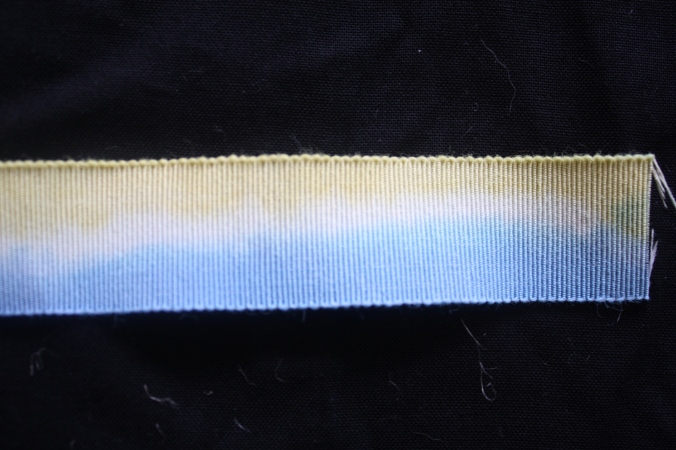 Next I tried to remove some of the painted colour with some very old colour remover and also decolourant (also very old at least five years) but I was only partially successful with the removal as you can see below.
Next I tried to remove some of the painted colour with some very old colour remover and also decolourant (also very old at least five years) but I was only partially successful with the removal as you can see below.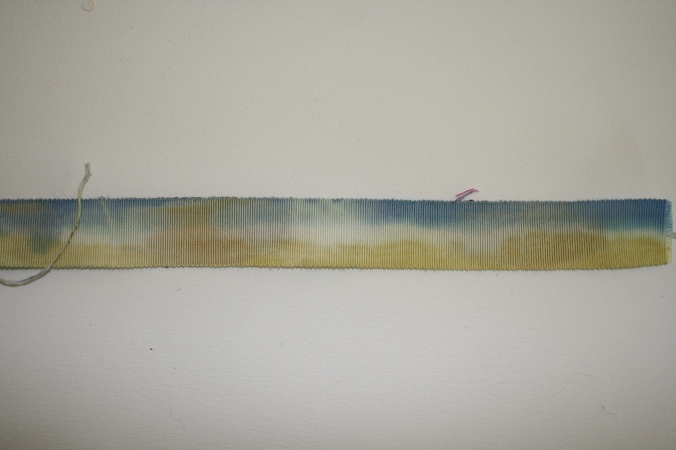 Interesting how the same piece of tape can throw different shading on a black fabric as opposed to white paper!
Interesting how the same piece of tape can throw different shading on a black fabric as opposed to white paper!









